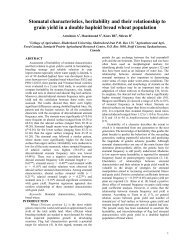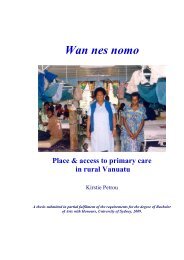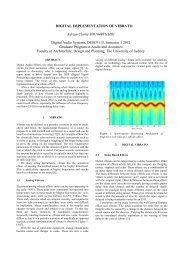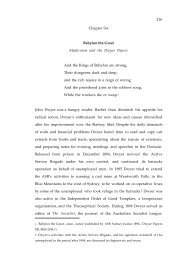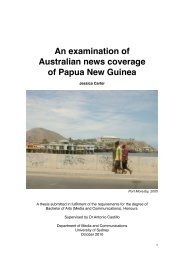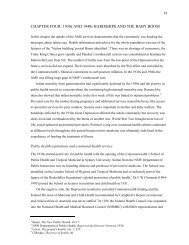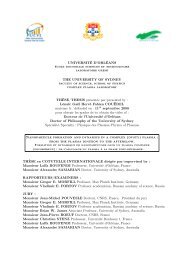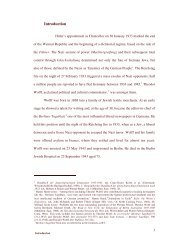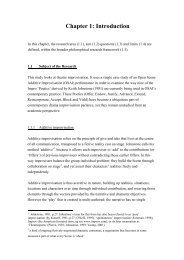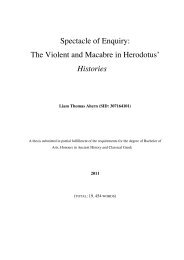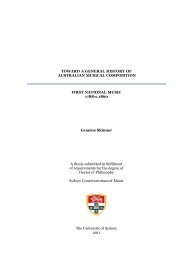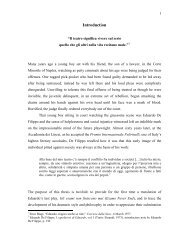journal of digital research & publishing - The Sydney eScholarship ...
journal of digital research & publishing - The Sydney eScholarship ...
journal of digital research & publishing - The Sydney eScholarship ...
Create successful ePaper yourself
Turn your PDF publications into a flip-book with our unique Google optimized e-Paper software.
FGH'IJ- KL@ M ' J N ' ! O P O 9@M'K Q 3 Q @ K ( R'S'G-TMO3 ROLP<br />
reliant upon cultural imagination and individual subjectivities, while in turn cultural<br />
imagination and individual subjectivities are produced by these technologies (Neumark<br />
2005:10). Counter culture and the cultural undercurrents <strong>of</strong> society are concerned with<br />
mainstream practices, links, interactions and experiences, while attempting to breathe life<br />
into an otherwise homogenized, mechanised and depersonalised society (Saper, 2001).<br />
As a result <strong>of</strong> a motivation for innovation, variation and change new ways to engage with<br />
information, discussion and user communities are developed.<br />
On the cusp <strong>of</strong> globalisation, post World War II, a desire to absorb and interact with<br />
6+%&5(#6(>%&7D&,#7)3#&5700("$6$%*&)%530%&3&*75$3#&0$"8*%6M&B+$*&G3*&3&*$,"$453"6&5+3",%&<br />
and a departure from the voyeuristic tendencies <strong>of</strong> previous generations and the end<br />
<strong>of</strong> an era <strong>of</strong> cultural exclusion, replaced by an inclusive art world and inclusive popular<br />
media. In a paper coauthored with Robert W. Taylor in 1968, titled ‘<strong>The</strong> Computer as<br />
a Communication Device,’ Licklider discusses the potential <strong>of</strong> networked computers to<br />
create ‘interactive communities <strong>of</strong> geographically separated people’ that furthermore ‘will<br />
be communities not <strong>of</strong> common location, but <strong>of</strong> common interest’ (as cited in Perkins,<br />
2005).<br />
Artistic communities have shown an independent motivation for promoting and<br />
extending their community bases, embracing technology available to them at the time.<br />
In many instances their networking projects have foreshadowed the ways in which online<br />
communities interact in contemporary society. Since the development <strong>of</strong> the Internet,<br />
globalization can now be considered a social and cultural condition, however a desire for<br />
connectivity and communication is evident in media and technology projects <strong>of</strong> smaller<br />
communities since the 1950’s. <strong>The</strong> following essay will consider art and creative culture<br />
and its relationship with media as a form <strong>of</strong> communication and community formation<br />
from the 1950’s until today.<br />
Mail Art: Evidence Of <strong>The</strong> Beginnings Of Cultural Networking<br />
<strong>The</strong> mail art movement was an innovative outgrowth <strong>of</strong> the downtown New York art<br />
scene <strong>of</strong> the 1950’s, pioneered by local artist Ray Johnson (Perkins, 2005; Cubitt, 2005;<br />
Gangadharan, 2009). Intrigued by collage and communication, Johnson embraced the<br />
UW






